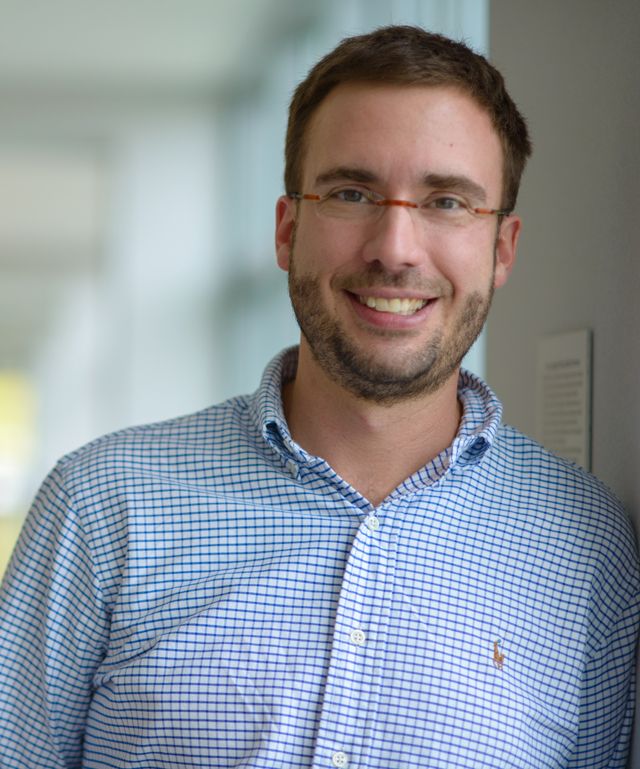More than 40 percent of potential new drugs fail in preclinical trials, says Bryan Berger, and another 30 to 40 percent are disqualified during the first phase of clinical testing.
One reason for the low success rate, says Berger, is that many drugs are too insoluble to be absorbed in sufficient quantities by the body. Another stumbling block is the difficulty in “scaling up,” or producing large quantities of a substance that is easily made in tiny quantities in the laboratory.
The pharmaceutical industry loses millions of dollars a year to drug failures but has struggled to find a cost-effective and biocompatible fix for drug insolubility, says Berger, the P.C. Rossin Assistant Professor of Chemical and Biomolecular Engineering.
Berger is proposing a three-part solution to the problem. He believes he can boost drug solubility with a protein called hydrophobin that is found in mushrooms and other fungi. The hydrophobin would act as a surfactant by reducing surface tension between liquids and solids.
By controlling hydrophobin’s pH, Berger believes he can target the delivery of a drug to diseased sites in the body. And by genetically reengineering the bacteria E. coli, he hopes to produce a drug in commercially viable quantities.
Berger recently received a five-year CAREER Award from the National Science Foundation for a project titled “Scalable Synthesis of Designed Biosurfactants to Enhance Drug Bioavailability.”
Berger also won recognition for the project in 2013, when he received a National Innovation Award at the TechConnect World Conference and Expo in Washington, D.C. The event brings together hundreds of innovators and technology business developers and funders.
The need for biocompatibility
Surfactants, which occur naturally and can be made synthetically, are used in detergents, mouthwashes and other solutions to improve water’s cleaning ability. Surfactants contain both water-soluble and oil-soluble components and thus have the ability to solubilize a variety of chemicals in solution. And surfactants can act as emulsifiers by stabilizing oil-water interfaces.
One goal of Berger’s research is to learn how to alter the structure of biosurfactants— surfactants made from biological sources—in order to improve drug solubility while preventing unwanted side-effects.
Currently, says Berger, about 90 percent of patented medications contain surfactants. One of the most common, Polysorbate 80, is also used as an emulsifier in food products and as a surfactant in cosmetics and soaps. The petroleum-based compound, also known by the brand name of Tween 80, is valued in part for its low cost. But the compound, says Berger, can cause severe allergic reactions, skin rashes and other side-effects.
“Tween can accumulate in the body over time,” says Berger, “and cause harm to people with immune-suppressive diseases or chronic illnesses. So there is a real interest in making biocompatible alternatives to Tween that are more environmentally friendly.
“Our goal is to make proteins that mimic Tween’s ability to formulate drugs, and that are nontoxic and scalable. Tween has the advantage of being dirt cheap because it is petroleum-based. Therefore, our solution has to be cheap, scalable and effective in order to be competitive.”
Hydrophobin, a protein discovered in 1991 in the common mushroom Schizophyllum commune, offers a biocompatible alternative to Tween 80. Benign, nontoxic and prevalent, hydrophobin is used commercially for coatings. It is difficult to produce the protein cheaply and in large quantities, but Berger believes he and his students have overcome that challenge.
“We have solved that problem by reengineering bacteria to produce hydrophobin recombinantly, forcing the bacteria E. coli to make a foreign protein abundantly. The next thing to do is redesign the protein so that it mimics Tween. There are some fascinating examples of biology naturally solving problems of scale; we can use this to our advantage.”
The pH switch
Berger and his students next had the idea of using pH as a “switch” to release drugs only to selected parts of the body, that is, to sites of infection or cancerous growth.
“Cancerous tissue and tissue infected by a disease tend to be more acidic than healthy tissue because of the high metabolic rate and the accumulation of lactic acid at the site,” he says. “This creates a local acidic environment and gives us a tool to preferentially release a drug at that site.
“We have developed a pH-switchable hydrophobin that is stable at normal physiological pH [low acidity] and falls apart, releasing the drug, at low pH [high-acidity].
“We believe this will prevent a drug from leaking into healthy tissue, causing side-effects and leading to what biologists call the ‘right drug, wrong place’ effect.”
In his CAREER project, Berger is working with Particle Sciences of Bethlehem, Pa., a contract development and manufacturing organization that offers drug formulation services to pharmaceutical companies.
“We plan to work with ibuprofen, also known as naproxen, as a first test case. Naproxen is notoriously water-insoluble. We will try to formulate the drug with a different surfactant and progress from there to try to formulate anti-cancer drugs.”
Berger described his recombinant work with E. coli and hydrophobin in 2013 in in the journal Protein Science in an article titled “High-yield membrane protein expression from E. coli using an engineered outer membrane protein F fusion” that was coauthored with his students Pin-Chuan Su ’14 Ph.D., William Si ’12 and Deidre L. Baker ’14.

